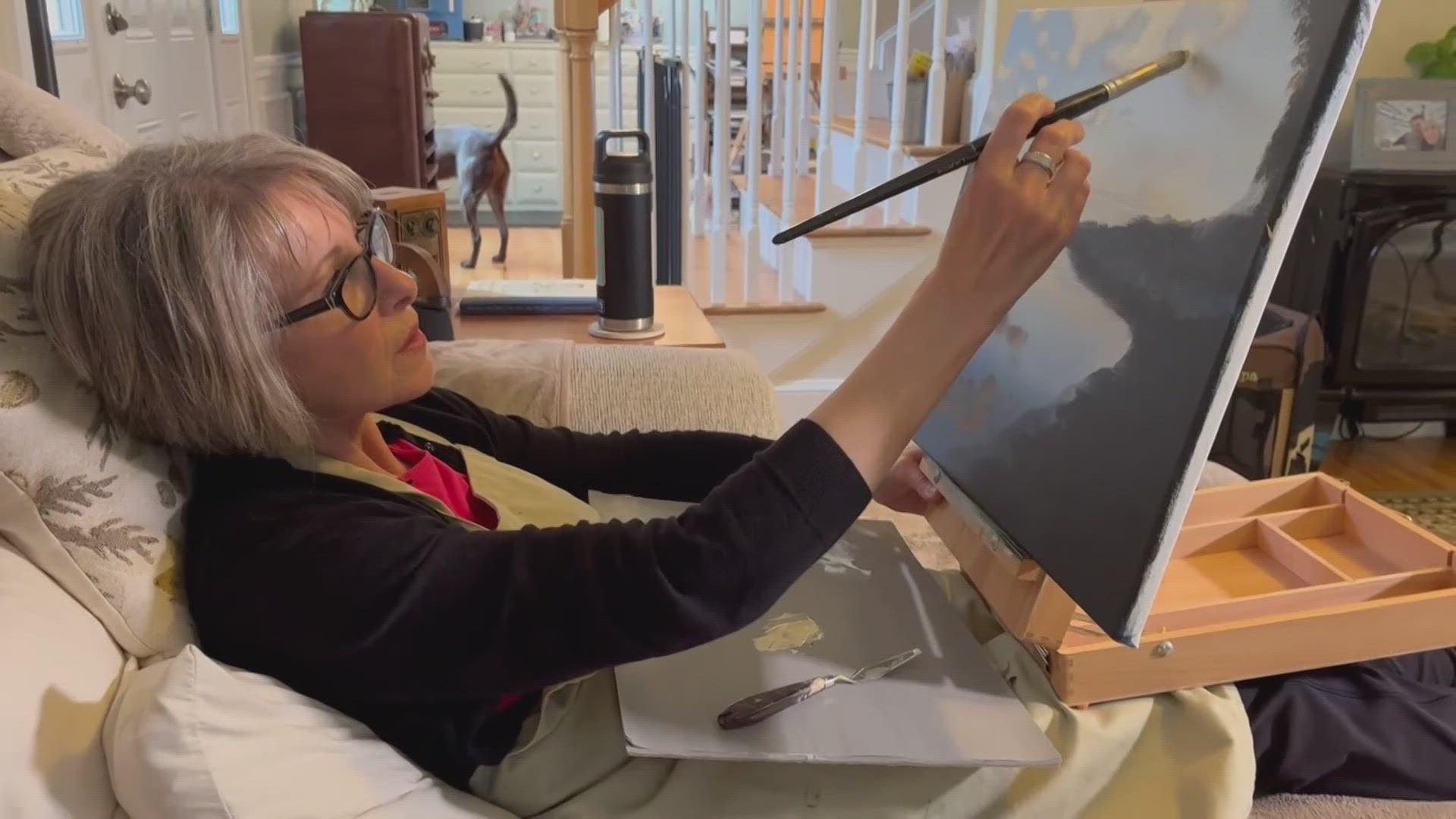GRAY, Maine — Statistics show that as many as one in three women will experience a pelvic floor disorder in their lifetime, but it can also impact men and children. PFDs are linked to weak pelvic muscles or tears in connective tissue that can cause pain and bladder and bowel control problems, among other issues.
A woman from Gray who spent years trying to get relief from debilitating pain is raising awareness that PFDs can occur in anyone at any age.
Donna Neill said the pain in her pelvic area began back in early 2014 after she began doing Zumba classes. At the time, she was a hairstylist and on her feet all day, working out of her home business.
"I'd come upstairs in tears, be in tears, so much heaviness, pain," Neill explained with pain in her voice.
She stopped doing Zumba and met with her gynecologist, who later diagnosed her with stage 2 rectocele, a type of pelvic organ prolapse that can cause weakening in the pelvic floor. But even after undergoing surgery to address the problem, her agony continued.
"Oh, it was like incredible pain," Neill said.
Pain that would send her blood pressure sky-high. The mother of two had to give up her hair salon as sitting and standing got worse. Long car rides required being propped up with pillows. Painkillers also didn't give her any relief.
"I am being honest, there are many times I have thought of suicide," Neill shared.
Unable to sit without pain, she began painting lying on her back to get her mind off her ordeal. After going from doctor to doctor and undergoing more procedures, she was finally diagnosed with pudendal neuralgia. Long-term pelvic pain originates from damage or irritation of the pudendal nerve, which is the main nerve in the pelvis. After undergoing surgery to relieve pressure on the pudendal nerve, Neill also found out her pelvic pain was originally caused by an unknown birth defect, which was exacerbated by the first surgery.
Neill was able to get some relief after she began seeing Susan Ramsey, a pelvic floor rehab therapist at Scarborough Physical Therapy Associates. Ramsey has been treating patients for 25 years. She said the pelvic floor is one of the most important, but least talked about, parts of the body, made up of muscles, ligaments, and connective tissue that hold all the pelvic organs.
"We are dealing with the spine, the hips, the pelvis, the vulva, the rectal area, the colon, the entire GI system, and the sacrum," Ramsey explained.
Ramsey said everyone, regardless of biological sex, can experience pain and other problems like bowel and bladder issues, but women are up to 30 percent more likely to suffer symptoms, especially after childbirth and during menopause. She and a team of pelvic floor rehab therapists provide one-on-one treatment and exercises like breath work and restorative yoga to help patients stretch and strengthen tight muscles, which they can also do at home.
"All the muscles around the pelvic floor—the legs, hips, and back, and the abdominals—tighten and shorten. We teach them flexibility exercises," Ramsey added.
As for Neill, who has also branched into creating and selling jewelry, pelvic floor rehab has helped manage her pain and prevent flare-ups—key therapy she wishes she had been referred to at the beginning of her ordeal. Now, she encouraging others to reach for help and not suffer through pain "down there."
For more information on pelvic floor disorders, click here.

